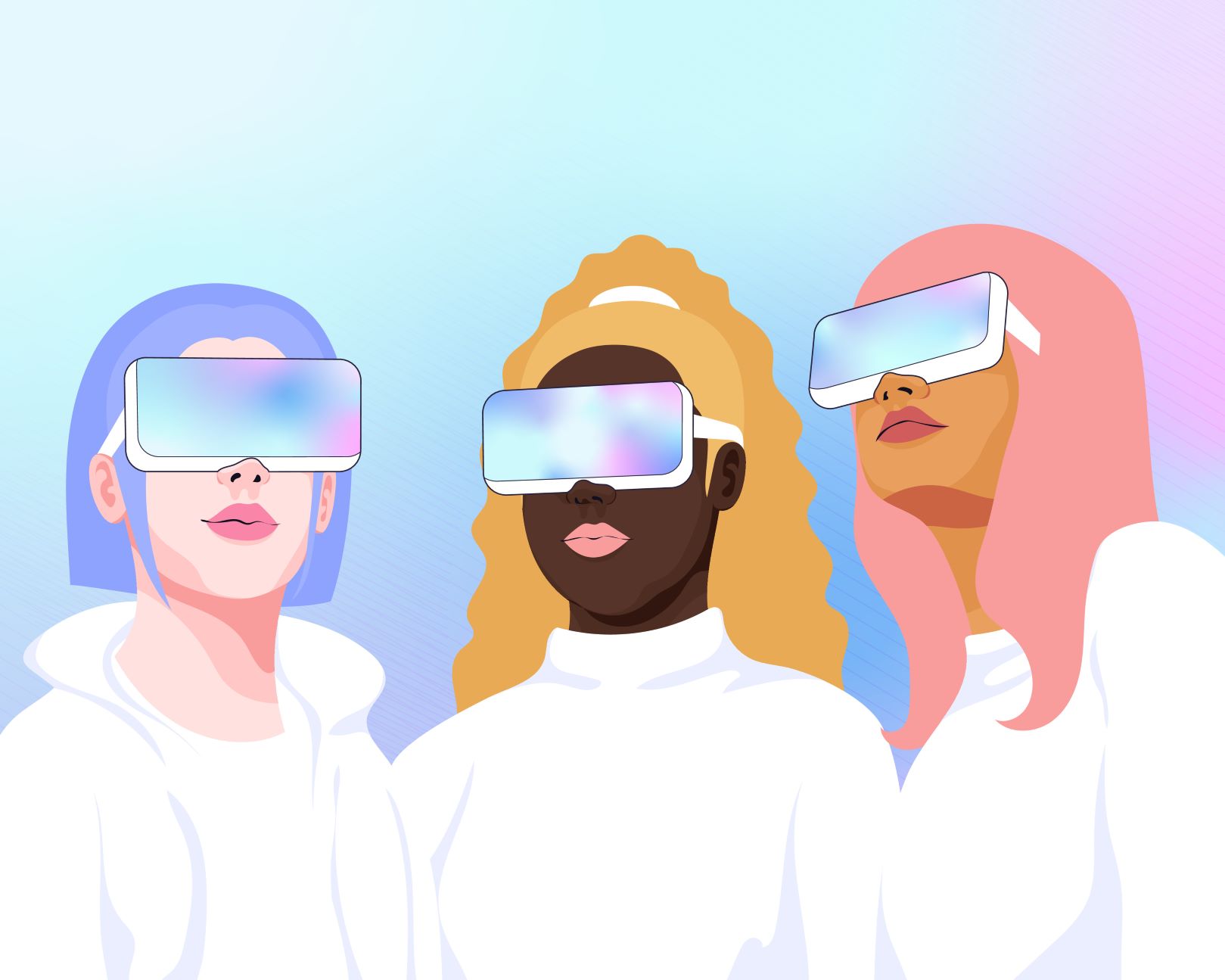Women in Tech 2022
Despite national conversations about gender diversity in tech, women are still underrepresented, underpaid, and often discriminated against in the tech industry, numbers show.
Gender diversity is critical in tech, as it enables companies to create better and safer products that take everyone into consideration, not just one section of society.
Moreover, a 2020 report from McKinsey found that diverse companies perform better, hire better talent, have more engaged employees, and retain workers better than companies that do not focus on diversity and inclusion. Despite this, women remain widely underrepresented in IT roles.

The employment gap
Women make up 47% of all employed adults in the U.S., but as of 2015, they hold only 25% of computing roles, according to data from the National Center for Women & Information Technology (NCWIT). Of the 25% of women working in tech, Asian women make up just 5% of that number, while Black and Hispanic women accounted for 3% and 1%, respectively. All this despite the fact that the growth of STEM jobs has outpaced the growth of overall employment in the country, growing 79% since 1990 while overall employment has grown 34%, according to data from Pew Research Center. Despite national conversations about the lack of diversity in tech, women are disproportionally missing out on this boom.
The degree gap
According to data from the National Science Foundation, more women than ever are earning STEM degrees — and they are catching up to men in earning bachelor’s degrees in science and engineering (S&E) subjects. But when you isolate by field of study, women earned only 19% of computer science degrees at the bachelor level in 2016, compared to 27% in 1997. Still, while women are less represented in undergrad CS departments, those who do pursue computer science degrees are more likely to dive more deeply these days, as the percentage of master’s degrees in computer science earned by women rose to 31% in 2016, up from 28% in 1997.
Workplace culture gap
Women aren’t entering technology jobs at the same rate as men — and one reason can be traced back to male-dominated workplaces. A 2017 poll in the Pew Research Center report found that 50% of women said they had experienced gender discrimination at work, while only 19% of men said the same. The numbers were even higher for women with a postgraduate degree (62%), working in computer jobs (74%) or in male-dominated workplaces (78%). When asked whether their gender made it harder to succeed at work, 20% of women said yes and 36% said sexual harassment is a problem in their workplace.
While these numbers show there is still work to do, it’s clear that women working on more gender-diverse teams were less likely to perceive gender inequalities at work. They were less likely to feel their organization would overlook them for an opportunity or promotion and were less likely to feel as if their gender got in the way of their corporate success. Women working in male-dominated environments were more likely to report higher rates of gender discrimination and hostile work environments.

The representation gap
A lack of representation for women in tech can hinder a woman’s ability to succeed in the industry. It can put limits on their opportunities for mentorship and sponsorship and can lend to fostering “unconscious gender bias in company culture,” leaving many women “without a clear path forward,” according to a report from TrustRadius. The report found that 72% of women in tech report being outnumbered by men in business meetings by a ratio of at least 2:1, while 26% report being outnumbered by 5:1 or more.
The majority of women in tech (78%) also report that they feel they have to work harder than their male coworkers to prove their worth. Women in tech are also four times more likely than men to see gender bias as an obstacle to promotion. And for women of color in tech, they are even less confident than white women about their prospects for promotion — 37% of women of color in tech report racial bias as a barrier to promotion.
The pandemic gap
Women in tech report facing more burnout than their male colleagues this past year. The report from TrustRadius found that 57% of women surveyed said they experienced more burnout than normal during the pandemic, compared to 36% of men who said the same. That might be because 44% of women also report taking on extra responsibilities at work, compared to 33% of men. And a greater number of women (33%) report taking on more childcare responsibilities than men (19%) at home. Women in tech were also almost twice as likely to have lost their jobs or to have been furloughed during the pandemic than men (14% vs. 8%).

The pay gap
Women are not only underrepresented in tech, they are also underpaid — according to a report from Dice, 38% of women report being unsatisfied with their compensation compared to 33% of men. The average salary of a woman in tech who reports being satisfied with their compensation is $93,591, compared to an average $108,711 for men. Although these statistics are trending upward, women still feel less enthusiastic about their senior leadership prospects than men. The report found that 54% of men said they felt it was likely that they’d be promoted to executive management in their company. Meanwhile, only 25% of women said the same, noting a lack of support, self-confidence, and mentorship, as well as feeling the need to “prove themselves more than men to get promoted.”
Related Links:
Want to learn more about Sabio? Attend an info session where you will have the opportunity to ask questions Sign up here: bit.ly/sabio-info-session
Ready to start coding? Free coding classes available to get you started: bit.ly/sabio-intro-classes
Posts you might like
- Embracing the Climb: A Leader's Growth Mindset Journey
- This is the Perfect Time to Dive into Coding and Automation, This is Why!
- Troubleshoot Like a Pro: The Art of Debugging in Programming
- Beyond Bootcamp: Diverse Career Avenues in Tech
- Spotting Burnout in Tech Job Hunts: 6 Warning Signs & Ways to Overcome It
- Get Hired: Essential Knowledge for Emerging Programmers
- 7 Steps to Build a Personalized Continuous Learning Plan for Coders
- Empower Your Journey: Benefits of Remote Code Bootcamps
- Proactive Steps: Daily Rituals for the Job-Hunting Programmer
- Don't Sabotage Your Tech Job Search: Mistakes to Skip
- Unleashing Opportunities: How Bootcamp Career Services Propel Success
- From Lines to Offers: How Your Coding Experience Shapes Market Value
- Optimizing Success: Your Attitude in Coding Bootcamps
- Roadmap to Success: Tech Job Hunt with a Coding Bootcamp Mentor
- Crafting Your Tech Startup Roadmap from Bootcamp Grad
- Tips for Creating a Resume That Gets Interviews for High-Experience Jobs After Coding Bootcamp
- Accelerate Your Career: Embrace Bootcamps for Real-World Programming Skills
- The Coding Craft: Essential Skills Learned at Bootcamps
- Bootcamp Bonds: Tapping into Networks for Tech Employment
- Coding Confidence Booster: The Benefits of Coding Mock Interviews
- Programming by the Clock: The Impact of Effective Time Management
- Coding Freedom: The Value of Learning at Your Own Speed
- Calm Code Journey: Overwhelm-Free Bootcamp Success
- Polish Your Pitch: Tech Interview Communication Essentials
- Inside the Loop: Coding Bootcamps and Tech Industry Strategies
- From Zero to Hired: Decode the Experience Question in Tech Interviews
- Solving the Puzzle: Refining Your Problem-Solving as a Programmer
- The Art of Practicality: Using Coding Languages Without Overlearning
- Practice Makes Perfect: The Key to Software Engineering Brilliance
- The Power of Pause: Why Rest is Vital for Programmers



